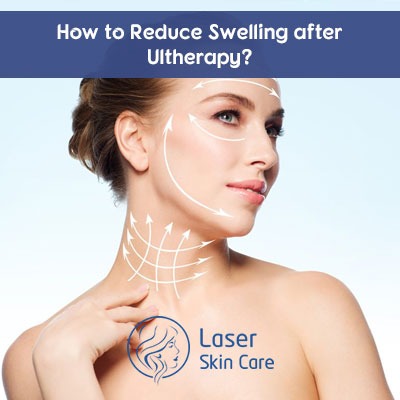Ultherapy treatment is a non-surgical substitute for the facelift. It is safe, costs less, delivers early, and offers long-lasting results. However, this treatment can also have some side effects that can be controlled easily. Therefore, we will discuss Ultherapy, its side effects, and ways to reduce swelling after the procedure.
What is Ultherapy?
Ultherapy is an FDA-approved non-invasive procedure to reverse aging signs such as wrinkles and sagging Skin. Therefore, dermatologists use this method to treat skin problems in different body areas, including the neck, chest, and face.
Ultherapy uses ultrasound energy to stimulate collagen production in deeper layers of the skin. Ultrasound energy raises the temperature of skin layers, muscles, and superficial wrinkles, promoting cell regeneration in all these areas.
Things To Expect After the Ultherapy Procedure
Since Ultherapy is a non-invasive cosmetic procedure, there is no downtime associated with it. You can get back to work or engage in routine activities right after the treatment. There are several side effects of the treatment, including swelling and redness.
To overcome these problems, you need to follow the instructions discussed in this blog post or consult your dermatologist if the problems are prolonged.
It may take a few months for Ultherapy results to show up. However, you will notice the initial signs of improvement within a few days of the procedure.
How to Reduce Swelling after Ultherapy?
The skin tissues experience mild trauma during the procedure, and swelling after Ultherapy is their normal reaction to this trauma. People experience slight swelling 1 to 3 days after Ultherapy treatment. Swelling is a byproduct of this treatment, and it is caused by heat and vibration, which is essential for collagen production.
The new amplified protocol is gentler on the skin, which reduces the chances of extreme swelling.
- You can reduce this side effect by keeping your head elevated when sleeping for a few days.
- Additionally, avoiding a strenuous physical workout can mitigate swelling significantly.
- Cold calming facial masks can also help you soothe your skin.
- To avoid social awkwardness, it is better to plan the treatment on the dates when you do not have a social event on your calendar.
You may consult a dermatologist for medication if the swelling is extreme after Ultherapy.
What are other Side Effects of Ultherapy?
Ultherapy uses ultrasound energy to trigger collagen production, which can cause sensations of tingling and heat. These sensations go away soon after the procedure is over.
The procedure has been approved by FDA. Before this approval, several trials are performed to determine if the procedure is safe. FDA approval means that the procedure is safe to be performed, and the benefits of the treatment supersede its side effects.
A few other side effects of Ultherapy may include:
- The treated area may become red or flush for a few hours after a treatment session.
- Bruising or reduced sensitivity in the treated area.
- Swelling and tenderness are also a bit more frequent complications of Ultherapy.
- Other rare side effects include numbness and bruising.
The good news is that these side effects vanish on their own after a couple of days. The side effects are mild, and most patients can tolerate them. The side effects do not pose a long-term threat to the patients.
The Bottom Line
Ultherapy is one of the safest skin rejuvenation procedures to reverse the aging impact. Yet, it is not without a few minor side effects, including swelling and redness.
Your dermatologist is your best advice to help you get rid of side effects and swelling. If you do not have a dermatologist on your list, Laser Skin Care Clinic Dubai might help!
We have a board-certified dermatologist who can help you get rid of the swelling due to Ultherapy. Along with this, they are well-qualified to treat all sorts of skin conditions.
Book a consultation to discuss your skin issues with our experienced dermatologist now.


